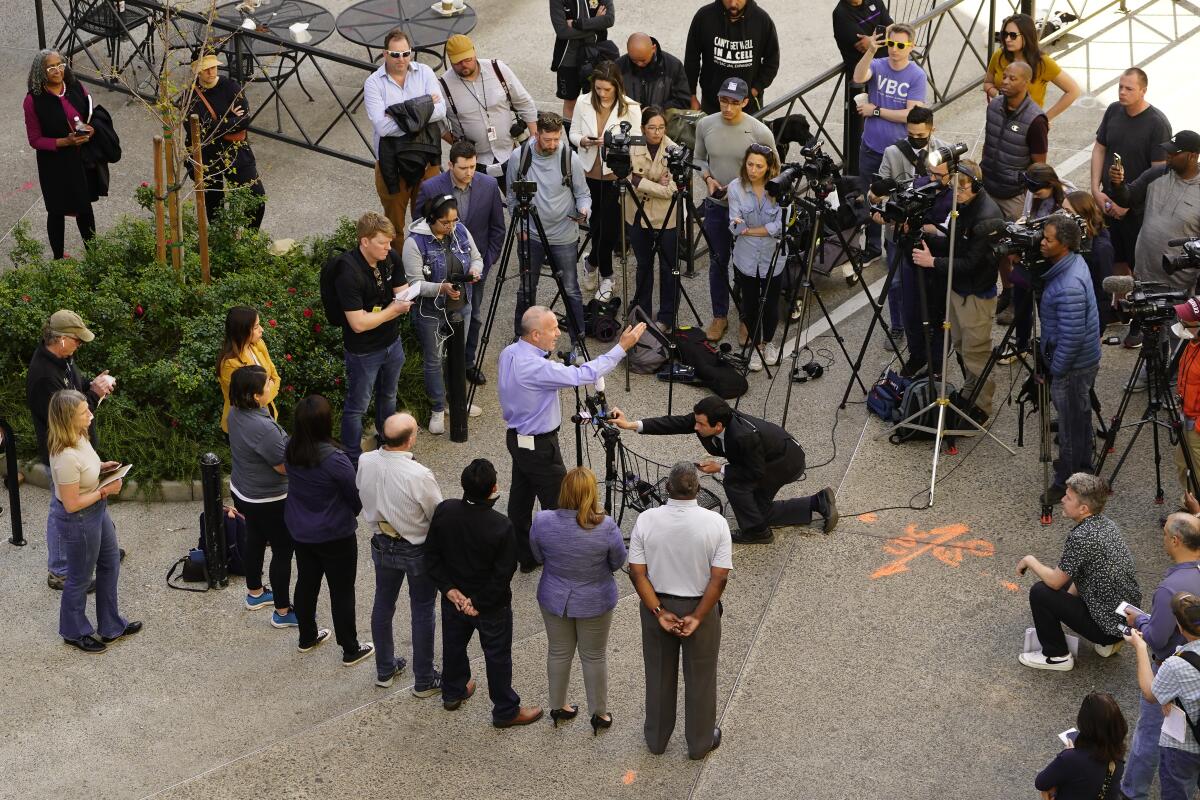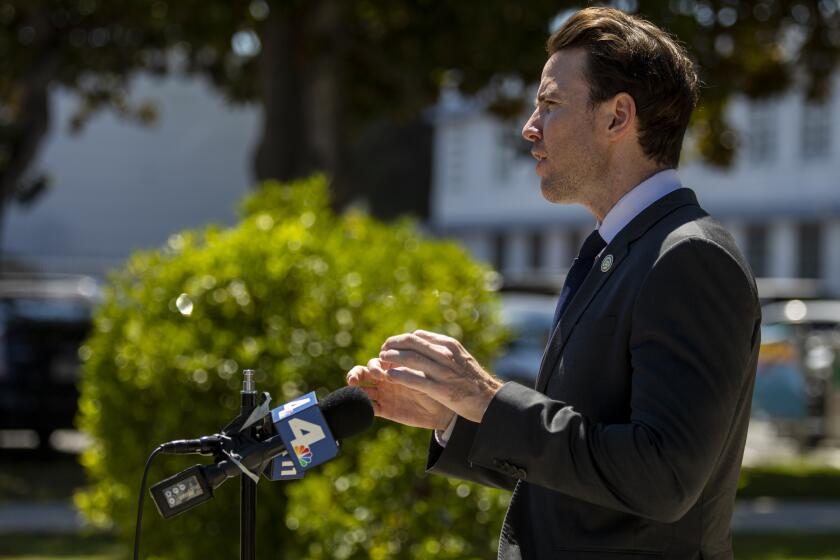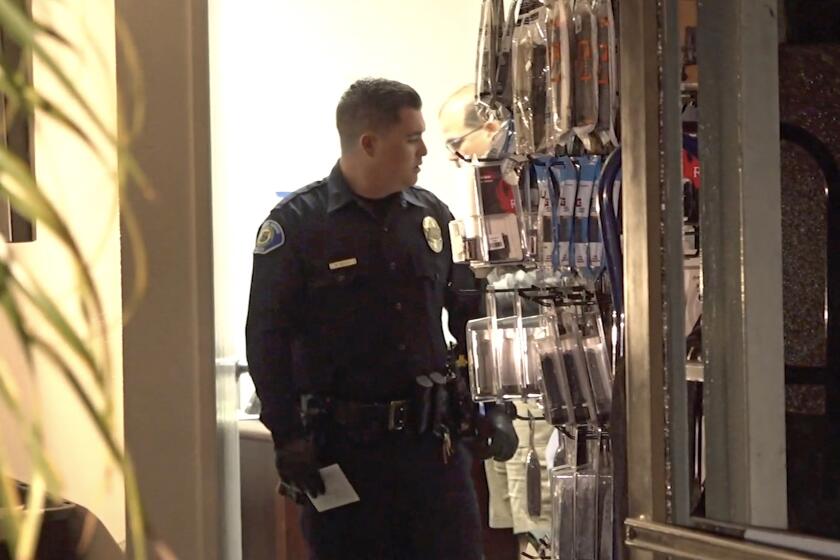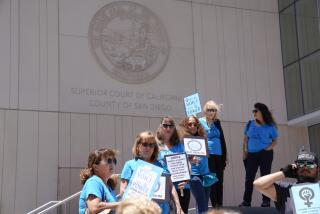Editorial: Truth is one of the casualties in Sacramento shooting

Much of what you heard last week about a suspect in the killing of six people in Sacramento the previous Sunday was patently false — that “the perpetrator” was able to do his ugly deed because he had been released from prison years early by Gov. Gavin Newsom’s soft-on-crime parole board despite warnings from the district attorney. Or maybe it was because of emergency COVID-19 orders to depopulate the prisons, or just a generally lax attitude about crime and punishment on the part of Democrats.
You know the saying, attributed to Mark Twain, or maybe it was Winston Churchill, or perhaps Jonathan Swift: A lie can travel halfway around the world while the truth is still putting on its shoes.
That may be, but now it’s time for the truth to lace up. Here are the facts as they are currently known:
Three bills to roll back or repeal Proposition 47 are grounded in fear and falsehoods and should be rejected.
By the end of the week, no one had yet been charged with the killings. Three men had been charged with firearms-related crimes, including Smiley Martin, about whom so many of the inaccurate claims were circulated by politicians and news outlets.
In 2018, Martin pleaded no contest and was sentenced on charges of assault and domestic violence. He requested parole but was denied last year. He wasn’t even granted a hearing, according to the California Department of Corrections and Rehabilitation.
News reports cited objections that Sacramento County Dist. Atty. Anne Marie Schubert’s office made to Martin’s 2021 parole request, but they had nothing to do with his actual release. By February 2022, he had served his full sentence. No one — not the Department of Corrections and Rehabilitation, not Schubert, not the Board of Parole Hearings — had any discretion or authority to keep him in prison a day longer than he was there.
He was not released from prison “early.”
How can that be true if he was sentenced to 10 years but served less than four in state prison? That requires more explanation than a headline or news conference generally allows.
Politicians, prosecutors and some news media often misuse the term “early release.” When people accused of crimes spend months in jail awaiting trial, that time is properly counted as part of their sentence. That’s the law and the Constitution. Martin was held in Sacramento County Jail for 508 days before his “no contest” plea and his sentence was entered, so deduct those days from his 10 years.
Everyone involved — the prosecutor, the judge, the prison warden and probably even the victims — knew from the start that a 10-year sentence meant at most five years, because of required good conduct credits at a rate of one day of credit for every day served.
California’s addiction to ‘tough on crime’ levels of incarceration has created a moral crisis and an economic sinkhole as well.
Good conduct credits are not some new, soft-on-crime invention. They have been embedded into California law (and most other states) for decades. They are taken into account when sentencing laws are adopted, when prosecutors charge, and when judges hand sentences down. They do not amount to “early release.”
Martin also earned some “milestone credits” — additional days as an incentive for completing rehabilitation and education programs, made available or expanded under Proposition 57, which was approved by voters in 2016 and was on the books when the plea bargain was negotiated the following year.
Should we want criminals to earn time off their base sentences by participating in programs like cognitive behavioral therapy and anger management, or for completing their high school degrees or skills training? Of course. Long experience and a trove of evidence show that people who complete those programs are far more likely to get work, stay housed and stay out of trouble after they leave prison. Their counterparts who don’t participate in the programs are more likely to get arrested and return to prison. It’s well within the public’s interest to prefer slightly shorter stays in prison in exchange for completing those programs.
Credits remain an issue because the corrections department has discretion to expand the program, with or without milestone incentives. It tried to do so last year, but prosecutors led by Sacramento’s Schubert went to court to block the action.
There’s an honest discussion to be had about whether an expanded credit program is worth the cost or effort. The proof should be in the numbers. If recidivism rates for participants are lower, it’s probably worth it. In any event, Martin’s case was unaffected by the latest proposed credit expansion.
Debunked tropes about California’s justice reforms supposedly causing crime keep coming up. They were false when crime was dropping, and they’re just as false now.
At the beginning of last week, anger against Newsom focused on his parole commissioners, who supposedly released Martin over Schubert’s principled objections — until a simple check of the facts revealed that there was no parole board involvement in the release. (The state parole process is indeed flawed, although not in the way critics charge. Parole in California is granted in only about 18% of cases. The national average is close to 50%.)
Now the subject of criticism is the supposedly profligate release credits, which were already on the table when prosecutors and Martin struck their sentencing deal.
This is an old story. A decade ago, critics of criminal justice reform tried to score points by blaming high-profile crimes on laws that put people released from prison under the supervision of county probation officers instead of state parole agents, although both have had successes and failures with their caseloads. Then the complaints focused on Proposition 47, which was blamed for the recent spate of “smash and grab” robberies — even though the measure has nothing to do with robberies. So the half-truths about credits and the falsehoods about parole boards shouldn’t be surprising.
But they can cause serious harm by undermining tested policies that improve lives. And they make a mockery of our democratic process by lifting up rumor and anecdote, and making them, rather than facts, central to our collective decision-making.
More to Read
A cure for the common opinion
Get thought-provoking perspectives with our weekly newsletter.
You may occasionally receive promotional content from the Los Angeles Times.













